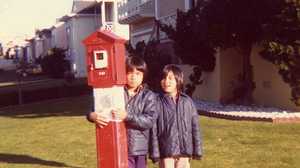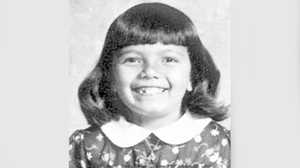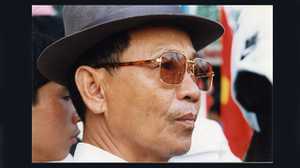Mai Thi Kim
Born in 1940, Mai Thi Kim lived in a village near Danang, where she and her mother sold rice at the marketplace. When she was sixteen, she married a young tailor named Do Huu Vinh. The couple had one son, Tinh, and two daughters, Hien and Lien.

In 1965, Vinh was drafted into the South Vietnamese army. Instead of joining the army, he disappeared, leaving Kim a letter in a trunk she had received as a wedding present. Vinh wrote that she should take care of the children. Kim burned the letter immediately.
Word got out that Vinh had joined the National Liberation Front, also known as the Viet Cong. Kim was arrested and brought before the village council. When the council questioned her about Vinh's whereabouts, Kim answered, "If you know, then why didn't you arrest him instead of me? I am looking for my husband everywhere..."
Because Vinh's parents did not want to be associated with a Communist, they refused to acknowledge Kim as their daughter-in-law any longer. They threw her and her children out of the house, and gave her no assistance of any kind.
Kim was constantly threatened, and even beaten, by the police. To end accusations that she was a Communist, Kim found a job at the U.S. military base in Danang, where she worked in the laundry of a naval hospital. She described her supervisor as a kind man, who showed her how to use the washing machine and iron. She knew him only by his nickname — Sergeant "Ski." Kim had initially been afraid of Americans, because she had never seen "Western" men before. "After working there, I found out that Western men were also very calm, very kind, and sweet to women," she said.
Kim had an affair with Ski, who helped support her children. Before he returned to the United States, they gave him a farewell party. Two days later Ski left without saying good-bye to Kim. A friend of his told Kim that he had not wanted to make her cry.
Five months later, Kim gave birth to a daughter, whom she named Hiep, "unity" in Vietnamese. Sergeant Ski's friend continued to help the family by bringing food and clothes for little Hiep. Through a difficult time of war and devastation, Kim managed to keep her four children fed, clothed and sheltered, as she says, "perhaps because I was smart and quick."
Hiep was a bright little girl. "She studied at Thiet Tam school with nuns," Mai remembered. "They were very compassionate. They were very kind to mixed children... They said she was very smart." Hiep's half-brother and -sisters helped take care of her while their mother struggled to keep the family afloat.
As the war drew to an end, Kim feared for Hiep. She had heard rumors that the North Vietnamese would kill all Amerasian children. After much deliberation, she decided to send Hiep to the United States. On March 15, 1975, Kim told her six-year-old daughter they were going shopping in Danang, and took her to an orphanage. An American social worker asked Kim questions; she was given no papers documenting the procedure. Kim asked the social worker how she was supposed to look for her daughter in the future, if she had no papers. The social worker replied that they would be sent sooner or later.
The Communists took over Danang on March 29, 1975. Vinh returned on April 10th. Although his family urged him to leave Kim, whom they called a prostitute, Vinh refused. He told his parents that he loved Kim, and forgave her. Vinh said that because he had gone to fight, Kim had done what was necessary to support their children.
Kim realized that Vinh did not reject her and that he would have raised Hiep as his own child. She understood that Hiep's life would not have been endangered. She knew she had made a big mistake by sending Hiep away, and she became desperate to find her. She searched for her daughter for years. In 1991, she went to Saigon to talk to American officials about finding her. Through a miraculous stroke of luck, she encountered someone with a contact in California who had kept lists of Babylift children through the decades. That person was T. T. Nhu, who not only worked to bring about the mother-daughter reunion, but also told the story to her acquaintance, filmmaker Gail Dolgin.
Kim's expectations for news of Hiep caused a lot of tension in the family. Her husband and children said that she must be dead, or else she would have contacted them already. They told her to forget about her lost child.
Then in 1996, Kim's efforts and faith began show results. Several Americans came with photos and documents to compare with those Kim had. They declared that they had done what all but Kim had thought impossible -- they had found Hiep. Hiep was now known as Heidi Bub. She was 28 years old, the wife of an American naval officer and mother of two young children. Kim looked forward with great joy to the day they would meet again. Mother and daughter reconnected by mail and telephone; a reunion was planned.
After 22 years of separation, on March 22, 1997, Kim and her daughter were reunited. Hiep, now Heidi, arrived at the airport in Danang for a seven-day visit — with a film crew in tow. Documented in Daughter from Danang, the love and joy of the reunion were apparent from the first moment, but so were problems, beginning with a language barrier.
Day by day, it became clear that the linguistic, cultural and emotional barriers would not be easy to overcome. The profound misunderstandings reached a crisis at the end of the visit, when Heidi's brother Tinh asked her to contribute to her mother's care -- either by taking Kim to the States or by sending money. Heidi, who was already strained by the many complicated issues of the visit, was overwhelmed. In an unbearably painful encounter, she replied that she was unable to help.
Kim excused her daughter's refusal, saying that she did not understand their family obligations. "Seeing you is what matters," she told Heidi. "I don't want you to be miserable. All I want is for you to be happy with our family. I know you'd never abandon me, or else why would you have come back?" Yet the wide gap between mother and daughter remains, kept in place by profound cultural misunderstandings and personal disappointments. As they said good-bye in 1997, Kim handed Heidi a self-addressed envelope, asking her to write -- but as of 2002 Heidi had not written back.







